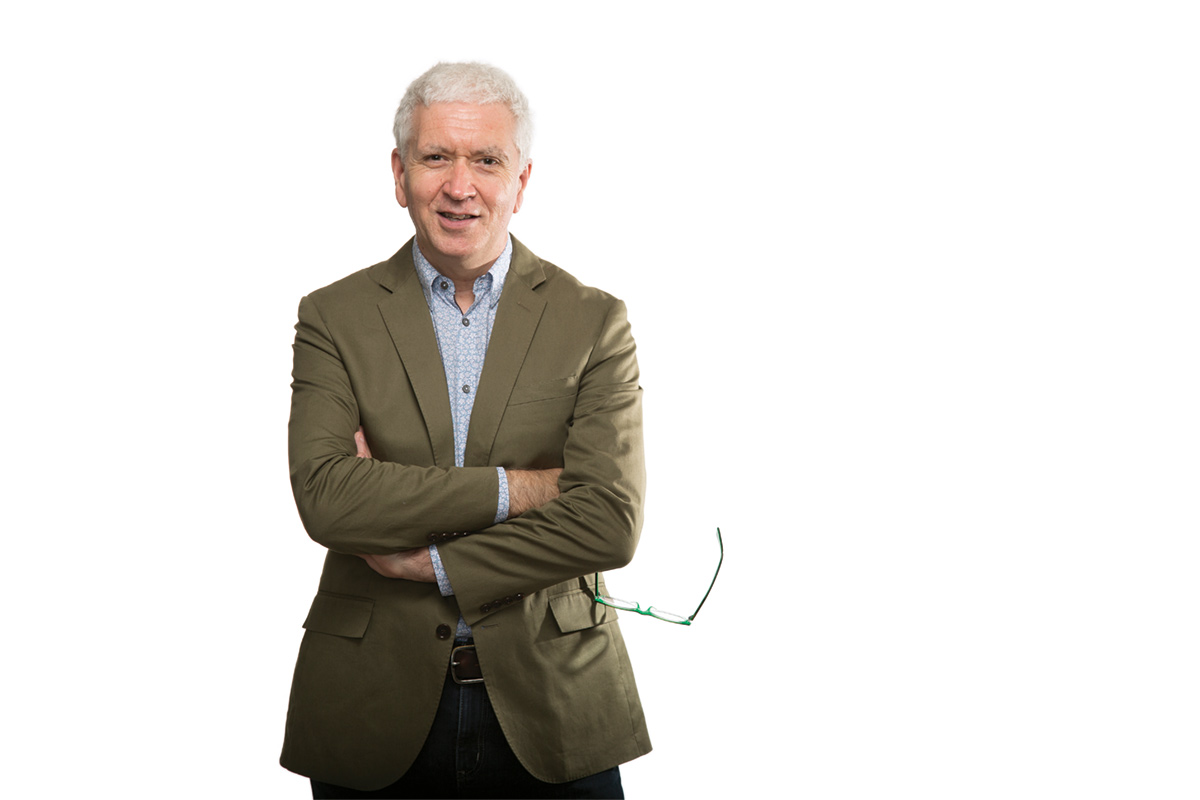In Global Health, Context Is Critical
James Lavery is the first Conrad N. Hilton Professor in Global Health Ethics

Stephen Nowland
Global biomedical and public health research—whether introducing genetically modified mosquitoes to fight dengue fever or testing new medicines to prevent HIV transmission from mother to child—is aimed at finding and implementing solutions to some of the world’s most pressing health problems. That’s obviously a fundamentally ethical pursuit. Isn’t it?
Yes, says James Lavery, recently named the first Conrad N. Hilton Professor in Global Health Ethics. But failure to understand the social and political context in which the work is being done, or to know and address how stakeholders perceive a project’s implications, has the potential to sink even the most well-intentioned, well-funded, otherwise well-designed research study.
Lavery, who also is a faculty member in the Emory Center for Ethics, likens what he does to being an architect. He works with people who may be designing lovely and functional structures to make sure they don’t build upon unstable foundations or in unsuitable locations.
Consider the mosquito net program that died because the white color of the net represented death in the country where it was being tested. Or the HIV pre-exposure study that was abruptly shut down after the sex workers involved in the study, who felt their concerns had not been taken seriously, staged a protest at an international AIDS meeting. Both projects likely looked great on the blueprint but fell apart in the construction phase.
Global research is especially tricky, says Lavery, since the majority of programs are conducted in low- and middle-income countries by researchers and funding from high-income countries. Researchers face different cultures, different languages, an imbalance of power and knowledge, and, sometimes, lingering distrust and fear of exploitation.
Lavery works to ensure that the core commitments and ethical intentions of global health research are translated into action and preserved through relationships with stakeholders, beginning with the scientists and people who fund them, and extending throughout the communities touched by studies.
He’s most interested in what he calls the human infrastructure of global health ethics, and community engagement is how this infrastructure comes about—how researchers identify and manage non-obvious stakeholder interests, demonstrate respect and trustworthiness, and build legitimacy by creating opportunities for dialogue and deliberation.
“I’m not trying to introduce additional obstacles for scientists,” says Lavery. Instead, he consults with them—and the people who fund them—to help plan, design, manage, and evaluate strategies for engaging with stakeholders in order to make their research more successful and ethically robust.
Creating a community engagement strategy is like imagining and creating a building, Lavery says. He sits with the scientists, discussing their vision, what they hope their “building” will accomplish and for whom. Who are the stakeholders? What are constraints of space, budget, regulations? Will it fit? Be appropriate? Accepted?
“Our work has been to figure out analogous elements, such as terms of research partnerships, ethical commitments, and guiding principles—methods for integrating community engagement activities with program management,” Lavery says. “We then help researchers and funders integrate these elements to develop blueprints and project management strategies.”
Based on years of investigating such “buildings,” including many that never got off the ground, Lavery and his team are constructing a “Learning Platform” to facilitate the process for funders and researchers. Each new building, or project, is completely different and customized.
James Curran, dean of the Rollins School of Public Health, believes Lavery will “provide leadership in public health ethics across the university and serve as a resource to Emory’s global ethics partners.”




